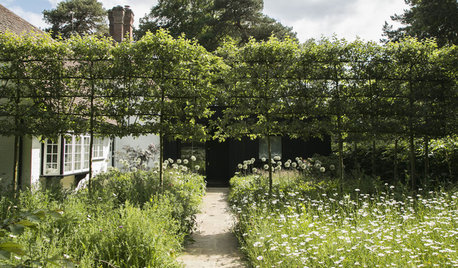Apple trees started from seeds--need for grafting ?
novagrdnr7a
12 years ago
Featured Answer
Comments (19)
fabaceae_native
12 years agoRandy31513
12 years agoRelated Professionals
Ferndale Landscape Architects & Landscape Designers · Goodyear Landscape Contractors · Tempe Landscape Contractors · Aberdeen Landscape Contractors · Bell Gardens Landscape Contractors · Chesapeake Ranch Estates Landscape Contractors · Davidson Landscape Contractors · Del Aire Landscape Contractors · Fort Wayne Landscape Contractors · Fuquay-Varina Landscape Contractors · North Potomac Landscape Contractors · Secaucus Landscape Contractors · Silver Firs Landscape Contractors · Baileys Crossroads Landscape Contractors · Vadnais Heights Landscape Contractorsnovagrdnr7a
12 years agojohn_in_sc
12 years agonovagrdnr7a
12 years agojrm1504
12 years agosam_ny
12 years agojohn_in_sc
12 years agodmtaylor
12 years agoEdymnion
12 years agonovagrdnr7a
12 years agomango908
12 years agoedweather USDA 9a, HZ 9, Sunset 28
12 years agolucky_p
12 years agodaemon2525
12 years agoMargaret Langdell
8 years agosam_ny
8 years agoedweather USDA 9a, HZ 9, Sunset 28
8 years ago
Related Stories

EDIBLE GARDENSHow to Add an Apple Tree to Your Edible Garden
Readily available, beautiful and fragrant, apple trees offer four-season interest along with crisp, juicy fruit
Full Story
GARDENING GUIDESSeeds or Seedlings? How to Get Your Garden Started
Growing delicious herbs and vegetables starts with knowing your goals and when you want to plant
Full Story
GARDENING GUIDESHow to Plant a New Lawn From Seed
Choose from more grass varieties and save money over sod by starting your lawn from seed
Full Story
GARDENING AND LANDSCAPINGCrab Apple Trees Set Off a Stylish English Courtyard
A structure of pleached crab apple trees, bordered by a wildflower meadow, links a minimalist addition to an old house in Buckinghamshire
Full Story
GARDENING FOR BUTTERFLIESA Quick-Start Guide to Bird-Watching for Fun and Learning
Set out some seed and grab your field guide. Bird-watching is an easy, entertaining and educational activity for the whole family
Full Story
GARDENING AND LANDSCAPINGCrazy for Fruit Trees
Whether a single citrus or a mini apple orchard, even the smallest landscape space can bear deliriously delicious fruit
Full Story
GARDENING GUIDES6 Steps to Get a Garden Off to a Glowing Start
Grow a lush, balanced garden from an empty patch of yard or neglected landscape spot with these easy-to-follow guidelines
Full Story
HOUZZ TOURSMy Houzz: It All Started With a Rug
One floor covering from Kazakhstan inspires a whole global vibe in a traveler’s San Francisco apartment
Full Story
GARDENING GUIDES10 Tips to Start a Garden — Can-Do Ideas for Beginners
Green up your landscape even if you're short on time, money and knowledge, with these manageable steps for first-time gardeners
Full Story
GARDENING AND LANDSCAPINGCitrus 101: Start Your Own Backyard Orchard
This Earth Day Weekend, Add Some Green, Style and Deliciousness to Your Landscape
Full Story







daemon2525